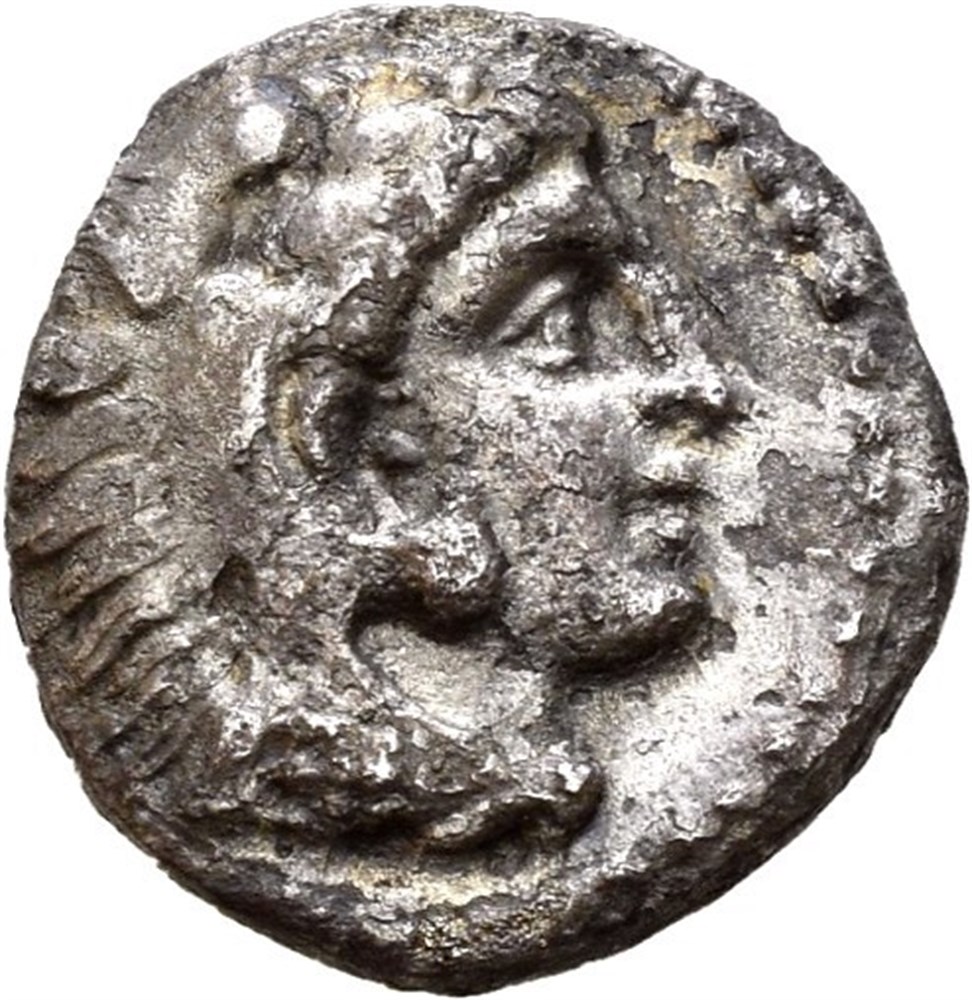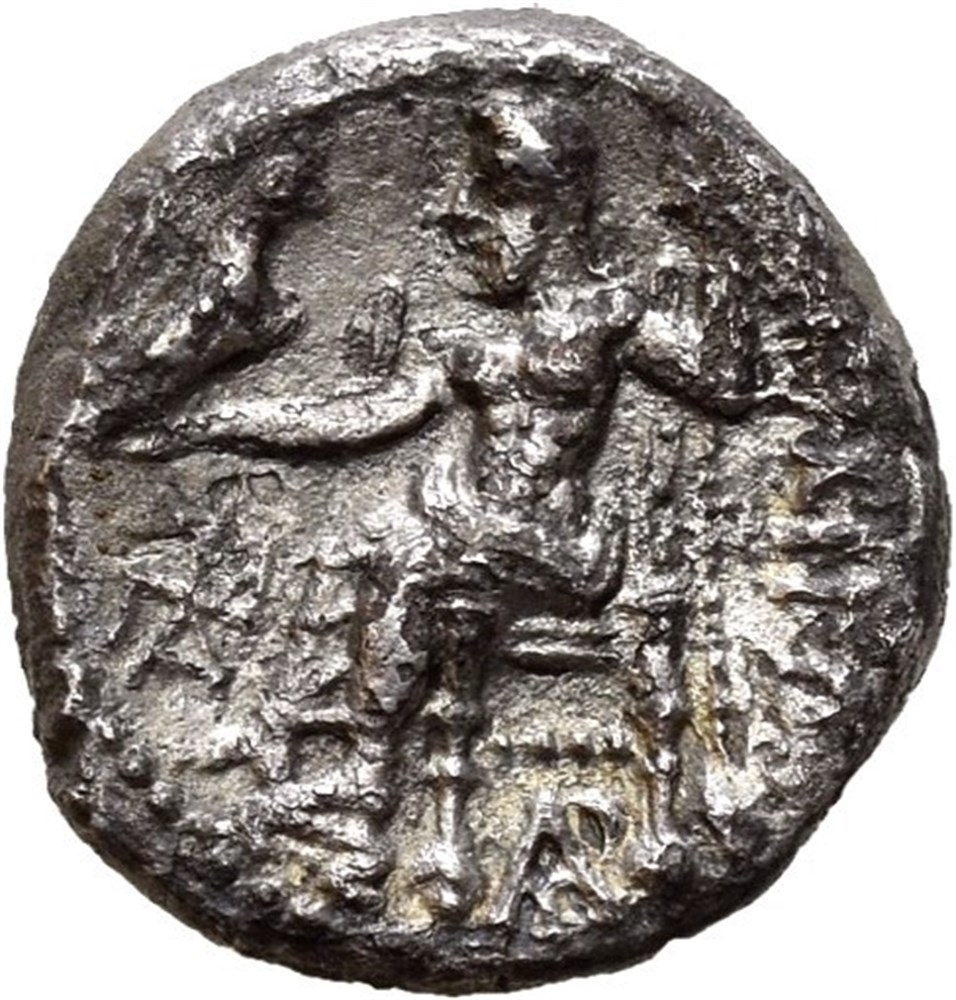SELEUKID KINGS of SYRIA, Seleukos I Nikator (as satrap, 321-315 BC). AR hemidrachm (1,84 g). In the name of Philip III and types of Alexander III of Macedon. Struck at uncertain mint in Babylonia circa 318-316 BC. Head of Heracles right, wearing lion skin headdress / ΒΑΣΙΛΕΩΣ ΦIΛIΠΠOY, Zeus seated left; monograms in left field and below throne. Corroded surfaces.
Referanse:
SC Ad40.1 corr.
Referanse 2:
Price P166 corr.
Referanse 3:
CNG E-auction 466, lot 213
Proveniens:
Seleukos was a general under Ptolemy, who upon the death of Alexander took command of Egypt, probably the richest province Alexander had acquired. Ptolemy sent Seleukos east to secure the vast areas of Syria, Persia, Bactria and northwestern India for him. Seleukos declared himself Basileos (king) over the lands he now controlled, known afterwards as the Seleukid kingdom. Seleukos soon gave up his Indian possessions for a hefty consideration, including 500 war elephants (of both sexes). Imagine self-reproducing tanks! This event was celebrated with the coin in lot 252 below. Over the years the Seleukid kingdom shrunk. Persian Medes reoccupied Persia, cutting of Bactria who declared independence under Diodotos I. The Ptolemeans of Egypt occupied Israel and Cyprus as well as part of Asia Minor. Antiochos III won back large parts of Asia Minor and Israel, but his expansion was stopped by the new adversary, the Romans. The Seleukid realm finally was limited to Syria, loosely the area of that name today. In true Greek tradition the Seleukid king sand princess fought each other, weakening the kingdoms ability to defend itself. About 60 BC, the Roman general, Pompey the great, decided to give them the final blow and he succeeded.


